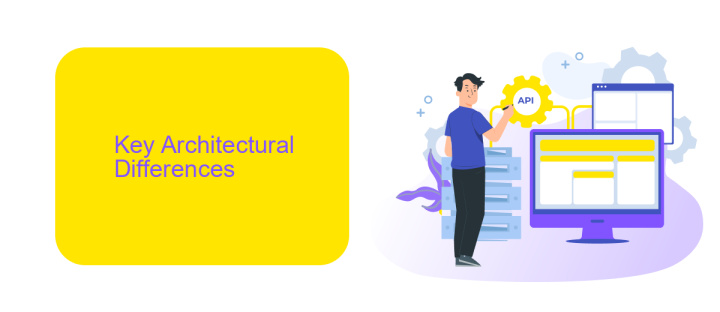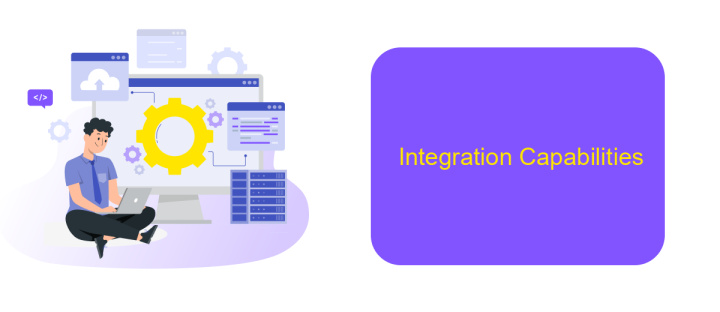MuleSoft Vs Oracle SOA
In today's rapidly evolving digital landscape, businesses are increasingly seeking robust integration solutions to streamline their operations. Two prominent players in this arena are MuleSoft and Oracle SOA. This article delves into a comparative analysis of these platforms, examining their features, capabilities, and overall effectiveness to help organizations make an informed decision on the best fit for their integration needs.
Introduction
In today's rapidly evolving digital landscape, businesses face the challenge of integrating diverse systems and applications to streamline operations and enhance productivity. Two prominent integration platforms that cater to these needs are MuleSoft and Oracle SOA. Both platforms offer robust solutions for connecting disparate systems, but they differ in their approach and capabilities.
- MuleSoft: Known for its Anypoint Platform, MuleSoft provides a comprehensive integration solution that includes API management, design, and analytics.
- Oracle SOA: Oracle's Service-Oriented Architecture (SOA) suite offers a unified approach to integrating applications and services, leveraging a range of middleware technologies.
When comparing these platforms, it's essential to consider factors such as ease of use, scalability, and the specific integration requirements of your organization. Additionally, tools like ApiX-Drive can complement these platforms by providing automated workflows and seamless data transfers between various applications, further enhancing the integration process. Understanding the strengths and limitations of each platform will help businesses make informed decisions and achieve optimal integration outcomes.
Key Architectural Differences

MuleSoft and Oracle SOA differ significantly in their architectural approaches to integration. MuleSoft employs a lightweight, scalable architecture that is based on the Anypoint Platform, which allows for seamless integration across various systems, applications, and services. Its architecture is designed for agility, enabling rapid deployment and easy management of APIs through its API-led connectivity approach. This modular design supports microservices, facilitating the development and deployment of integration solutions in a more flexible and efficient manner.
On the other hand, Oracle SOA Suite is built on a more traditional, heavyweight architecture. It utilizes a comprehensive suite of tools and middleware to provide robust integration capabilities. While it offers extensive features for enterprise-level integrations, its architecture can be more complex and resource-intensive. Oracle SOA is designed to handle large-scale, mission-critical applications with a focus on reliability and security. Additionally, integration services like ApiX-Drive can complement both platforms by offering automated data transfer and synchronization, enhancing the overall integration process.
Core Functionality and Use Cases

When comparing MuleSoft and Oracle SOA, it's essential to understand their core functionalities and use cases. MuleSoft is a robust integration platform that provides tools for building application networks with APIs, facilitating seamless connectivity across various systems. Oracle SOA Suite, on the other hand, is a comprehensive middleware solution designed for building, deploying, and managing service-oriented architecture (SOA) applications.
- MuleSoft offers an extensive library of pre-built connectors and templates, enabling rapid integration with numerous applications and services.
- Oracle SOA Suite excels in orchestrating complex business processes and managing service interactions through its powerful BPEL engine.
- Both platforms support API management, but MuleSoft's Anypoint Platform provides a more intuitive and user-friendly interface for designing and managing APIs.
For businesses looking to streamline their integration processes, services like ApiX-Drive can be a valuable addition. ApiX-Drive offers an easy-to-use interface for setting up integrations without requiring extensive technical knowledge, making it an excellent complement to both MuleSoft and Oracle SOA. Ultimately, the choice between MuleSoft and Oracle SOA depends on the specific needs and technical requirements of the organization.
Integration Capabilities

When comparing MuleSoft and Oracle SOA, it is essential to examine their integration capabilities. MuleSoft offers a comprehensive platform with a wide range of connectors and tools for seamless integration across various applications and systems. Its Anypoint Platform enables users to design, build, and manage APIs effortlessly, streamlining the integration process.
On the other hand, Oracle SOA Suite provides a robust, service-oriented architecture that facilitates the integration of diverse enterprise applications. It supports a variety of protocols and standards, making it a versatile solution for complex integration scenarios.
- MuleSoft Anypoint Platform: Comprehensive API management and integration tools.
- Oracle SOA Suite: Extensive support for various protocols and standards.
- ApiX-Drive: Simplifies integration setup with user-friendly interface and automation features.
Both MuleSoft and Oracle SOA offer powerful integration capabilities, but the choice between them depends on specific business needs and existing infrastructure. ApiX-Drive can be a valuable addition to either platform, providing a simplified approach to integration setup and automation, further enhancing the overall integration experience.
Conclusion
In conclusion, both MuleSoft and Oracle SOA offer robust solutions for enterprise integration, each with its own set of strengths and weaknesses. MuleSoft stands out for its ease of use, flexibility, and extensive support for modern integration needs, making it an excellent choice for businesses looking for quick and efficient integration solutions. On the other hand, Oracle SOA is renowned for its comprehensive suite of tools and capabilities, particularly suited for large enterprises with complex integration requirements.
Choosing between MuleSoft and Oracle SOA ultimately depends on your organization's specific needs and existing infrastructure. Additionally, leveraging services like ApiX-Drive can further simplify the integration process by providing user-friendly tools for connecting various applications and automating workflows. By carefully evaluating your business requirements and considering supplementary services, you can make a well-informed decision that aligns with your long-term integration strategy.


FAQ
What are the primary differences between MuleSoft and Oracle SOA?
Which platform is better for cloud integration?
How do MuleSoft and Oracle SOA handle scalability?
What are the costs associated with MuleSoft vs. Oracle SOA?
Can I use third-party services to help with the integration process?
Apix-Drive will help optimize business processes, save you from a lot of routine tasks and unnecessary costs for automation, attracting additional specialists. Try setting up a free test connection with ApiX-Drive and see for yourself. Now you have to think about where to invest the freed time and money!

